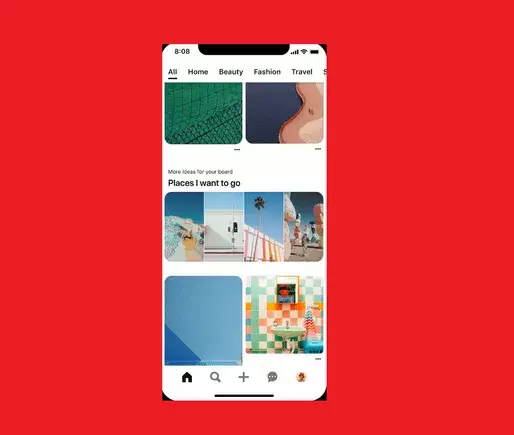Pinterest has long been a hub for inspiration, allowing users to curate their personal boards filled with creative ideas ranging from home decor to recipes. Recently, however, Pinterest has taken a bold step to enhance user interaction by integrating full-width module types into their feed. These modules are designed not merely to showcase more content but to cultivate a richer relationship between users and the platform. Such enhancements raise an essential question: what impact do these modules have on user engagement and the overall Pinterest experience?
Understanding the New Module Framework
Pinterest’s latest introduction includes two primary module types: landing page modules and carousel modules. The landing page modules direct users to a separate landing page filled with interactive Pins, engaging them in a deep dive into specific topics. On the other hand, carousel modules display a horizontal shelf of Pins, reminiscent of an Instagram-style gallery, that provides a quick view of various related ideas. The underlying idea is clear: broaden the spectrum of engagement and elevate the user’s interaction with the platform.
Furthermore, Pinterest has made notable strides to ensure that these modules enhance, rather than detract from, the user experience. This is crucial in maintaining engagement, as the last thing users want is an overload of content that feels irrelevant. By tailoring module visibility based on previous interactions, Pinterest’s sophisticated algorithm determines when to display or hide modules to encourage meaningful engagement. This method not only keeps the feed fresh but also respects users’ preferences by reducing the noise that can often accompany social media feeds.
Engagement-Driven Visibility: The Art of Algorithmic Precision
At the heart of these new enhancements lies Pinterest’s commitment to user-centric design. The platform actively tracks user behavior and engagement metrics to dictate the display of these modules. For instance, if a user consistently bypasses a particular module, Pinterest’s algorithm temporarily hides it from view. This commitment to dynamic content adjustment is a great leap towards tailored user experiences that do not overwhelm users but guide them towards areas of genuine interest.
The technology behind this decision is fascinating. Pinterest aggregates historical data, analyzing how often users interact with specific modules to determine visibility. A user who repeatedly scrolls past a module without engagement may find it unobtrusive removed from their feed. This nuanced approach demonstrates Pinterest’s ability to pivot in real-time based on user interaction, showing a level of intelligence that fosters a more personalized experience.
Protecting Pin Integrity: Balancing Modules and Content
Pinterest’s innovation extends beyond the introduction of new modules; it encompasses a broader strategy aimed at preserving the integrity of Pins users love. Initially, implementing these modules posed a risk: the possibility of high-engagement Pins being overshadowed by new modules. Recognizing this potential drawback, Pinterest has employed a unique ‘skip slot’ method. This dynamic approach evaluates the predicted engagement of both the modules and the surrounding Pins, ensuring that essential Pins aren’t replaced indiscriminately.
Such a strategic blend indicates Pinterest’s awareness of its users’ needs. Users are in control; they can navigate through a seamless mix of familiar and novel content. By ensuring that the most engaging Pins are prioritized, Pinterest demonstrates a commitment to not just directing users but also valuing what keeps them coming back to the platform.
The Marketer’s Perspective: Adapting to Change
Marketers watching Pinterest’s evolution must recognize the implications of these changes. As Pinterest refines its approach to engagement, the strategies marketers employ on the platform need to adapt correspondingly. This involves understanding the nuances of module visibility and audience engagement metrics to effectively reach potential customers. The integration of these modules could mean not only more significant opportunities to connect with users but also a more challenging landscape where creativity must mingle with strategic thinking.
Dynamic content presentation elevates the experience for both users and marketers. For brands aiming to capitalize on Pinterest’s visual-first platform, it’s more important than ever to innovate in content creation and to adapt to how users interact with these emerging module types. In this ever-evolving environment, the ability to harness engagement through understanding user behavior will prove vital for success.

